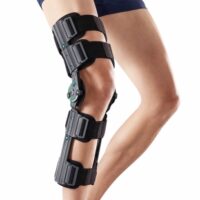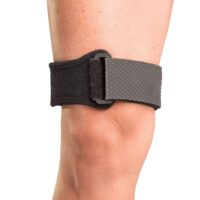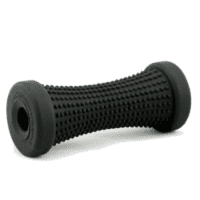Discoid Meniscus
Article by John Miller

What is a Discoid Meniscus?
Discoid Meniscus
Every knee has a medial and lateral meniscus which are C-shaped pieces of fibrocartilage that absorb stress and act as cushions between the bones at the knee. At birth, the meniscus is not C-shaped but discoid (round like a discus).
With growth and walking, the discoid meniscus evolves into its normal C-shape. In some children, the lateral meniscus continues to stay discoid with growth. The incidence is approximately 3-5% of the population.
What are the Symptoms of a Discoid Meniscus?
The most common presentation is a 6 to 8-year-old child with a “snapping” or a “clicking” knee when they walk. However, it is also possible for the onset to occur in the early adolescent years when a child’s sporting activities increase. Luckily, a discoid meniscus is usually pain-free, and the clicking noise is frequently noticed first.
In some instances, as the child grows older, the click increases and may cause recurrent locking, where they cannot straighten or bend their knee fully. This lock will commonly also manifest as pain in the knee.
What Tests Confirm a Discoid Meniscus?
The X-ray appearance is usually healthy in a discoid meniscus. To confirm the diagnosis, an MRI is often necessary to visualise the discoid meniscus.
What is the Treatment of Discoid Meniscus?
In most cases, if there is no significant locking or pain, treatment is non-surgical. Physiotherapist- prescribed exercises consisting of stretching and strengthening exercises for the Quadriceps and Hamstring muscles plus proprioceptive and knee control exercises are normally successful.
In cases where there is a significant disability, surgical excision may occur. In most cases, a partial removal to preserve the cushioning function may be sufficient. You will need to consult with an Orthopaedic Surgeon for a medical opinion.
Please consult your knee physiotherapist or doctor for specific advice regarding your discoid meniscus.
Rochedale - Call 38410277
Book Online: RochedaleSalisbury - Call 32751044
Book Online: SalisburySandgate - Call 32691122
Book Online: SandgateRelated Articles
- Meniscus Tear – Explains the causes, symptoms, and treatment options for meniscus tears, a common knee injury.
- Meniscus Tear Treatment Options: Your Guide To Diagnosis & Treatment – Offers comprehensive insights into managing meniscal injuries and various treatment methods.
- Knee Sports Injuries – Provides information on different sports-related knee injuries and prevention tips.
- Effective Management of Popliteus Tendinopathy – Discusses the symptoms, causes, and treatment options for Popliteus Tendinopathy, affecting the knee area.
- Management of Fat Pad Syndrome: Insights & Tips – Delivers an overview of Fat Pad Syndrome, including symptoms, causes, and how it can be managed.
- Osgood-Schlatter Disease – Focuses on a knee condition common in young athletes, including symptoms, causes, and treatment options.





















































































